This section summarises how the ideas in the what, who and how sections may be drawn together into a successful management strategy for floodplain river fisheries. The various steps are divided into those which should be taken by (1) national-level policy makers, (2) catchment managers (including any co-ordinating fora for multi-CMA rivers), and (3) managers of the individual CMAs, IMAs and VMAs. The steps are summarised in Figure 5.1 below and described more fully in the following tables.
Many of the activities described in these tables will be new to governments, or involve new forms of partnership with other organisations. It must therefore be emphasised that adoption of the proposed strategy should be built up slowly, using a ‘process’ approach, and by learning from successes and failures. Institutional arrangements - whether local fisheries management groups or higher level partnerships - are critical to the success of these approaches. These can not be defined in advance or imposed fully formed from above; they must also be allowed to evolve and develop, with effective participation from below. Time must be allowed for differences to be negotiated and conflicts to be resolved. Again, the approach taken should be gradual and should focus on learning continuously from experience, rather than on promoting a blueprint approach.
A useful first stage should be for fishery departments to develop a partnership with organisations experienced in facilitating the development of community organisations. Village management units should then be promoted, initially in simpler situations where waterbody control is relatively undisputed or where traditional institutions already exist. Activities for resolving conflicts between VMAs, or for developing IMA-level management should come later.
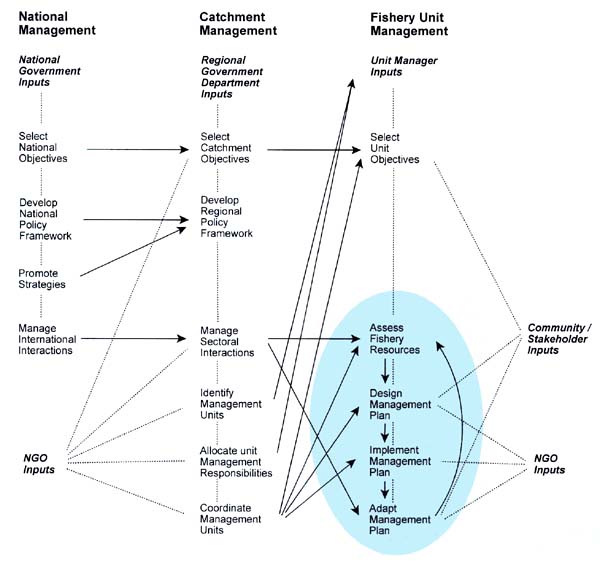 | Figure 5.1 Management activities required for effective co-management of fishery units (dotted lines indicate inputs by different organisations; solid arrows indicate the contribution of the information between different activities; the shaded area indicates the main components of the ongoing adaptive management process) |
The main responsibilities of national level fishery managers (the fisheries ministries / directorate generals etc) is for the promotion of improved management systems, and the endorsement of activities at the lower management levels. Decentralised management can not proceed effectively until the rights of local people and agencies to manage is recognised and clearly stated in the legislation.
Management activities at the catchment level provide the necessary leadership and co-ordination of the lower VMA and IMA management units (see table). Managers at the catchment level must also be responsible for the management of whitefish stocks in the CMA-level management units (see Section 5.3). Catchment-level management activities may be undertaken by any appropriate administrative level below national government. Some countries may have two or even three administrative levels which could each participate in these management activities at appropriate stages. Where spatial administrative units do not overlap exactly with river catchments (as will often be the case), catchment level management may need to involve collaboration between two or more administrative regions. Such collaboration may either involve the creation of a new catchment management forum, or the writing of a memorandum or understanding between the existing units.
The management activities in the final table provide for the sustainable, long-term management of the fisheries in each management unit. They should be undertaken by the co-management partners of each CMA, IMA and VMA unit, according to their interests and capacities.
National-level management activities
| Select national objectives (Government) |
|
| Develop national policy framework (Government) |
|
| Promote regional adoption of co-management strategies (Government) |
|
| Manage interactions for international rivers (Government) |
|
Catchment-level management activities
| Select catchment objectives (Government Fisheries and Regional Planning Departments) |
|
| Develop regional policy framework (Government Fisheries and Legal Departments) |
|
| Manage sectoral interactions (Government Natural Resources Departments) |
|
| Identify management units (Government and Unit Managers) |
|
| Allocate unit management responsibilities (Government and Unit Managers) |
|
| Coordinate management units (Government and Unit Managers) |
|
Management unit-level activities
| Select unit objectives (Unit Managers and other Stakeholders) |
|
| Assess the fishery resource (Unit Managers) |
|
| Design the management plan (Unit Managers and other Stakeholders) |
|
| Implement the management plan (Unit Managers) |
|
| Adapt the management plan (Unit Managers) |
|
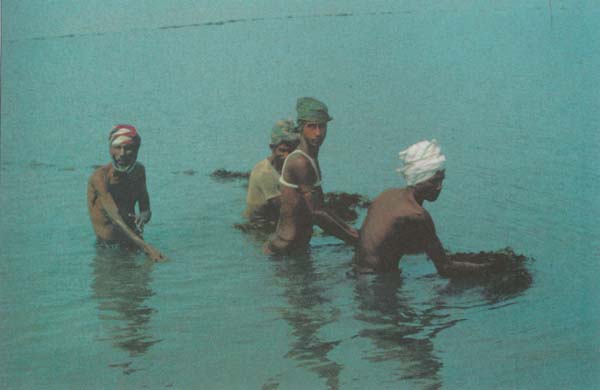
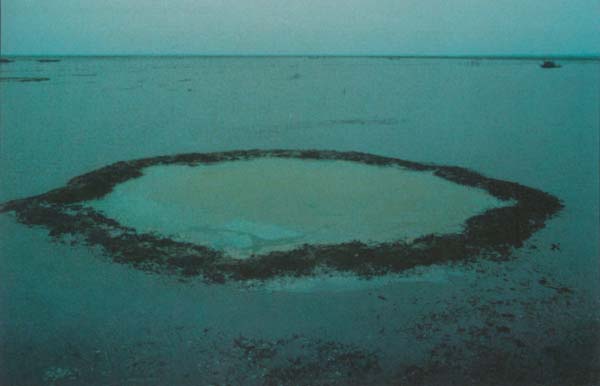
Bangladeshi floodplains support enormous numbers of fishers - some people own no fishing gears but may still catch a few small fish by rolling up a circle of weed (All photographs by D. D. Hoggarth)
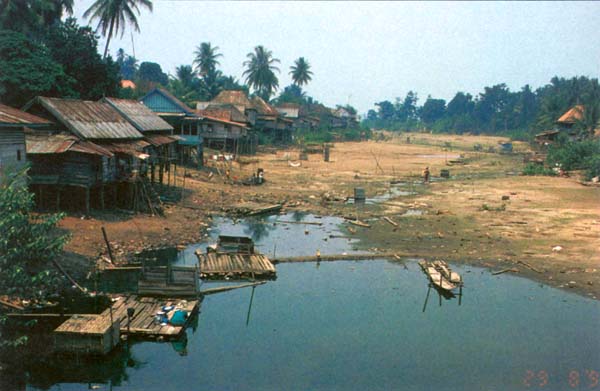
The Komering River in Indonesia now dries up almost completely in the dry season due to irrigation works upstream
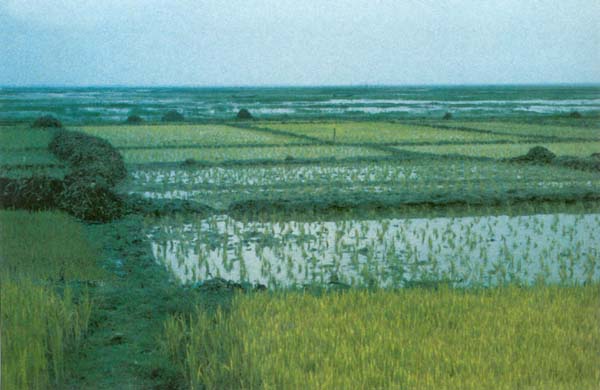
Bangladeshi fishers must operate alongside farmers who use the floodplains to grow rice for much of the year
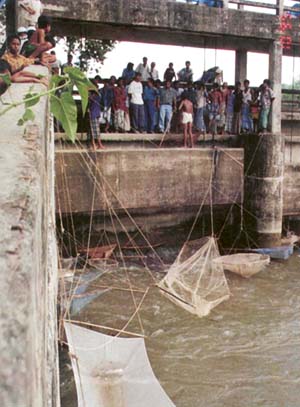 | 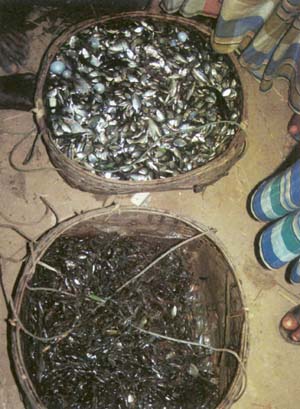 |
| Large-scale flood control schemes may give agricultural and social benefits, and create some fishing opportunities for ‘jump trap’ fishers, but they may also have negative impacts on the other fishers inside the scheme | Bangladesh's heavily exploited floodplain waters support millions of fishers, but catches now mainly comprise the very smallest fish and prawns |

Fine-meshed fish traps usually indicate the most heavily exploited fisheries
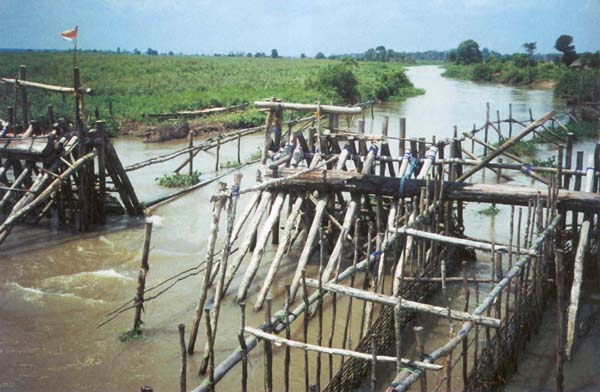
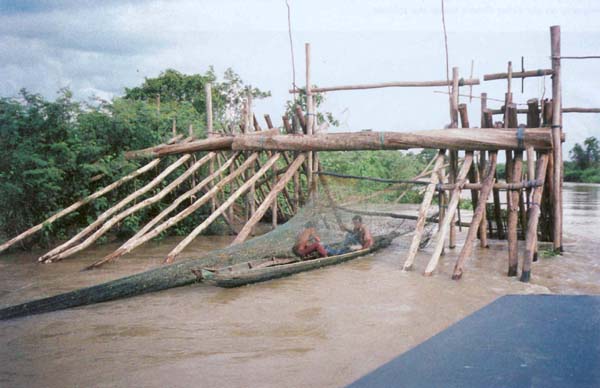
Barrier traps such as corong flume traps and tuguk suspended trawls in Indonesia are expensive to construct, but highly effective at catching migrating fish
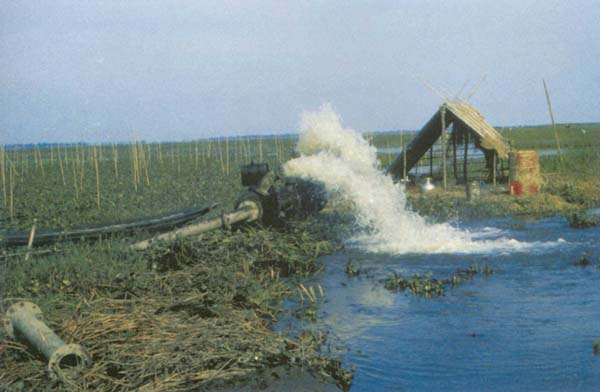
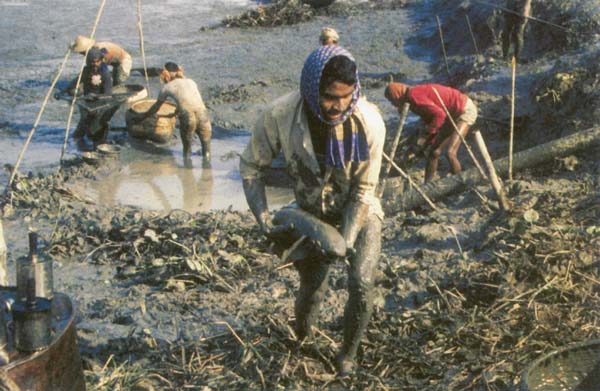
In Bangladesh, dry season floodplain waterbodies may even be pumped dry to extract the last remaining fish
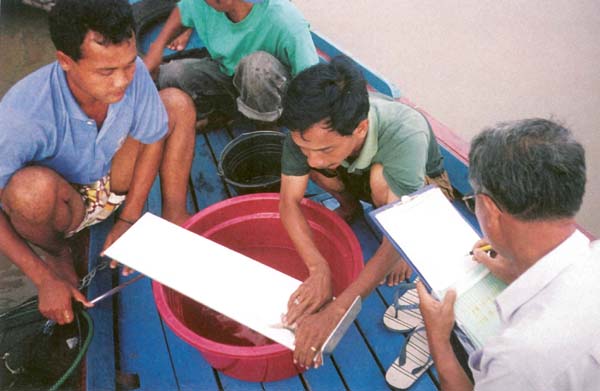
Detailed scientific studies may provide a good basis for understanding aspects of the fishery but are only a small part of the overall management strategy

Rights to fish in some Indonesian waters are auctioned every year - such existing links between government and fishers provide good opportunities for developing further collaboration
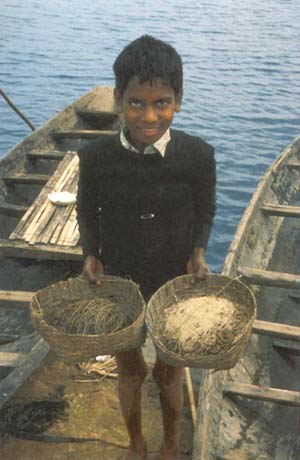 | Cheap ‘set-and-wait’ gears such as long-lines provide an income for the poorer fishers but may be negatively affected by regulations intended to control other gears |

Even small floodplain waterbodies may enable many brood fish to survive the dry season, if protected as reserves (River Ganges, India)

Main river channels, such as the River Ganges in India are too big for the effective use of barrier or hoovering fishing gears and provide natural refuges for fish
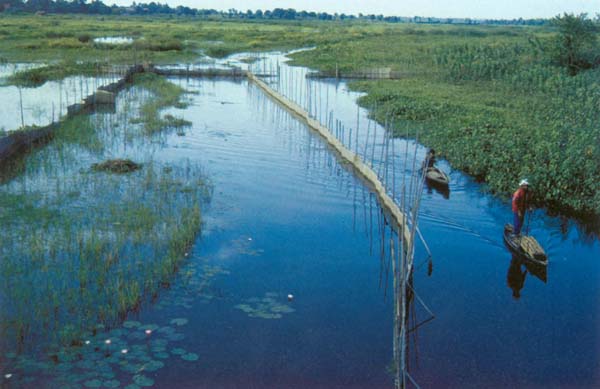
Small channels draining the floodplain are used by migrating whitefish, but may be easily blocked by barrier traps (River Lempuing, Indonesia)
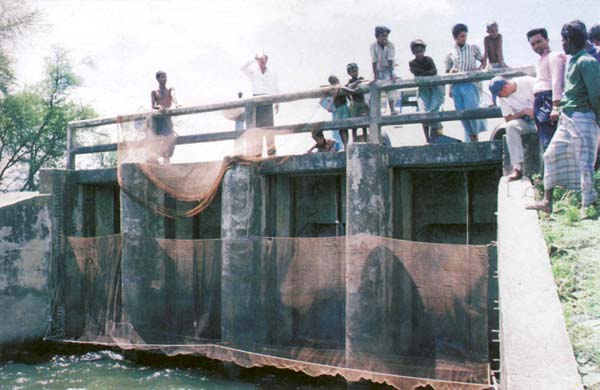
Sluice gates which provide fishing opportunities for a few ‘jump net’ fishers may also be operated to maximise fish migrations for wider benefits to the fishing community
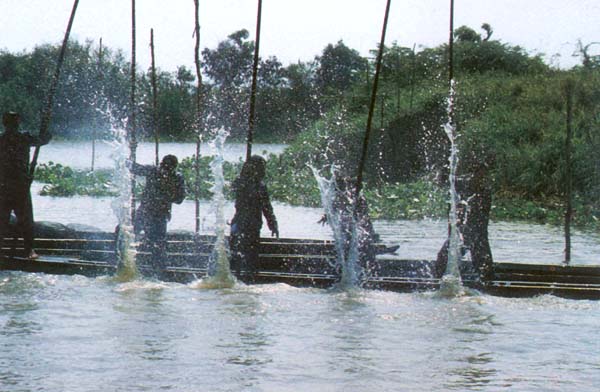
Changes in the inputs to the fishery, such as the gear types in use, should be monitored in order to understand any changes in the monitored outputs
